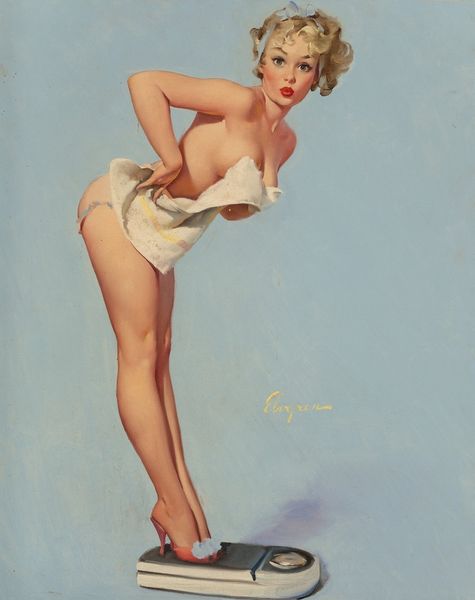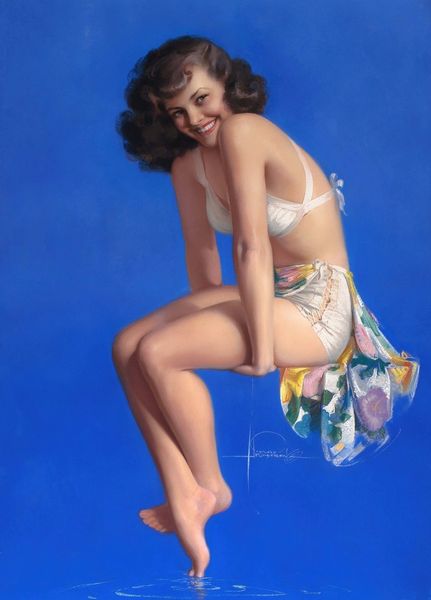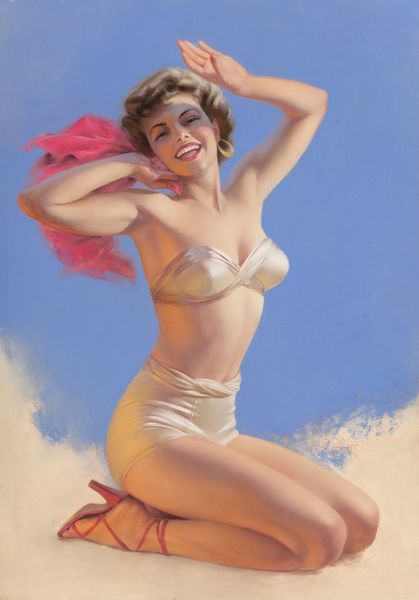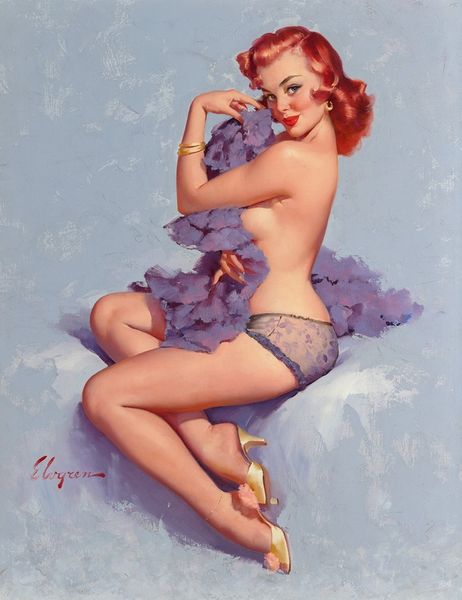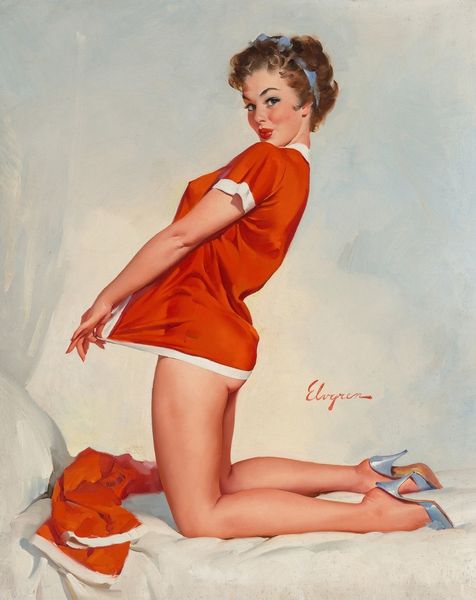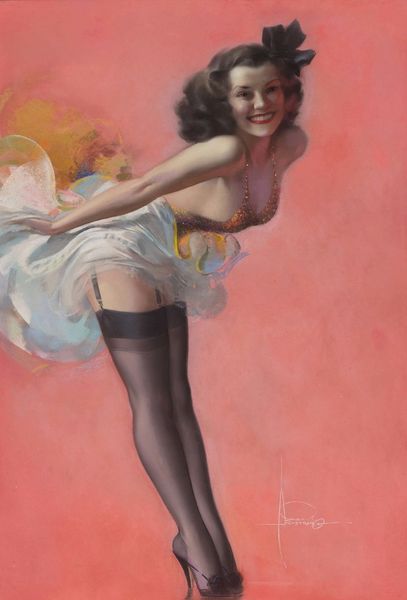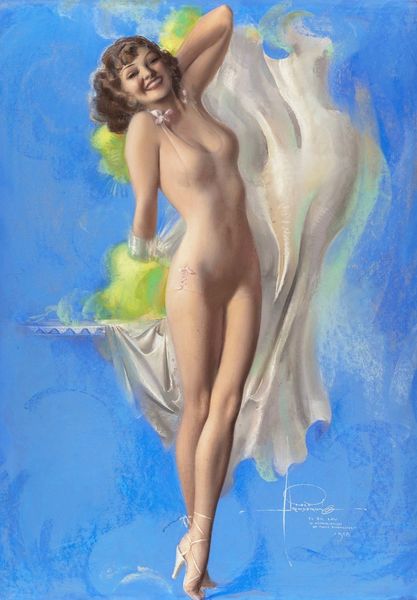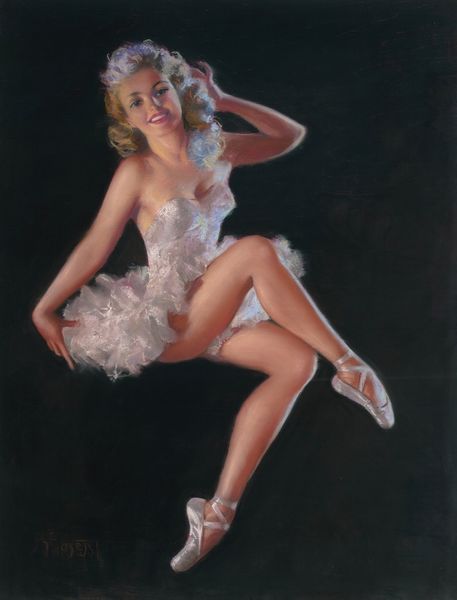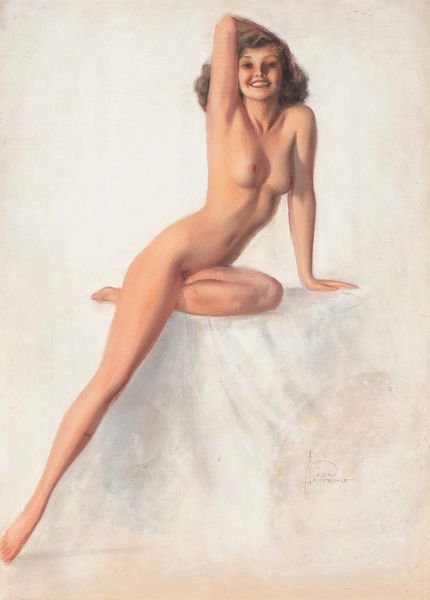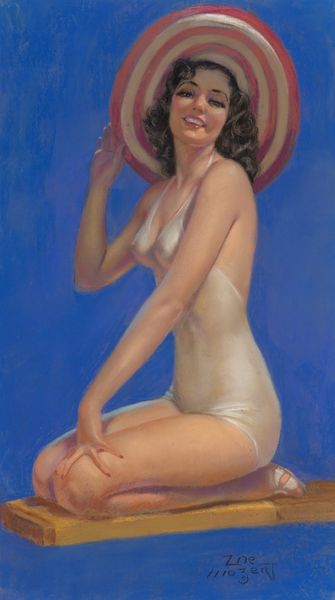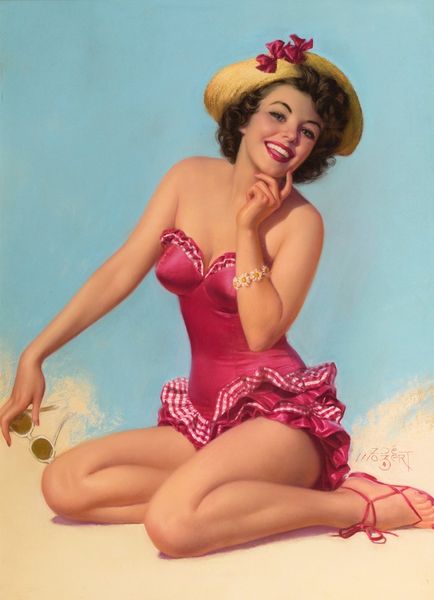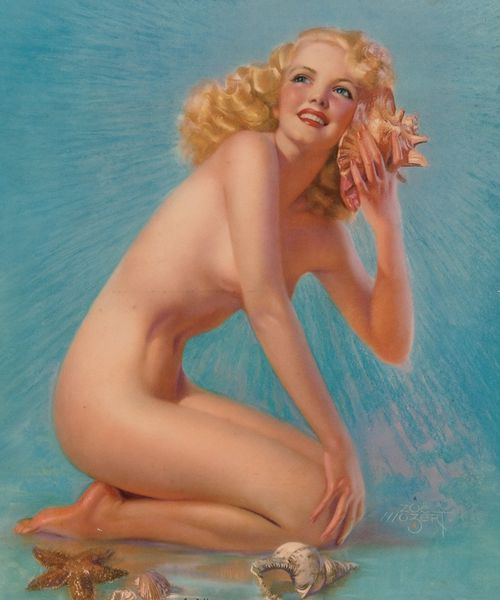
painting, plein-air
#
portrait
#
painting
#
plein-air
#
figuration
#
genre-painting
#
academic-art
#
erotic-art
#
realism
Copyright: Modern Artists: Artvee
Curator: Here we have Rolf Armstrong’s “See You Soon,” a pin-up painting executed around 1947. Armstrong was a master of the genre, primarily working in pastel and often for the Brown & Bigelow calendar company. Editor: My first impression is one of studied nonchalance. The woman’s pose seems artificially casual, almost contrived against that ethereal, dreamlike background. Curator: Right. The image absolutely taps into the visual vernacular of that era. The pastel palette evokes a sense of soft glamour, a carefully constructed femininity that was highly marketable. Her pose echoes idealized feminine forms throughout art history, consciously or unconsciously creating a continuum of beauty. The way she reclines reminds one of an odalisque, of classical forms. Editor: It’s all so meticulously arranged. Consider the color choices: the juxtaposition of that soft pink lingerie against the diffused blues creates a gentle contrast, guiding the eye across the surface. The artist's manipulation of light and shadow shapes her form. It’s not necessarily photo-realistic, but employs a delicate highlighting that contributes to the painting’s aura of idealization. Curator: I agree. Armstrong seems to pull from cultural narratives of seduction, painting an archetype of the charming woman with a playful expression that invites you into her private moment. The gesture "see you soon" reinforces a promise, but one imbued with the visual language of desire. Editor: I can’t shake the sense of artificiality, though. Everything, down to the soft smile, is so carefully constructed to present this flawless vision of femininity. Consider how much is unsaid, masked under the image. It leaves the contemporary viewer grappling with questions of agency and objectification. Curator: Certainly. And yet, the painting’s enduring appeal resides precisely in its embodiment of certain enduring aspirations. Looking closer reveals the power of constructed imagery—revealing how art becomes an artifact that encapsulates layers of desire. Editor: Looking beyond the representational content shows its powerful capacity to shape our understandings, inviting continued reflection. Curator: Indeed.
Comments
No comments
Be the first to comment and join the conversation on the ultimate creative platform.
